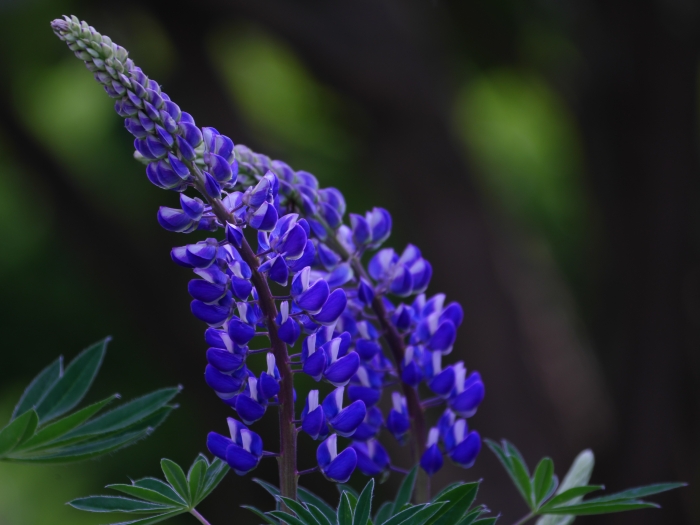Bigleaf Lupine
(Lupinus polyphyllus)
Bigleaf Lupine (Lupinus polyphyllus)
/
/

Membeth
CC0
Image By:
Membeth
Recorded By:
Copyright:
CC0
Copyright Notice:
Photo by: Membeth | License Type: CC0 | License URL: http://creativecommons.org/publicdomain/zero/1.0/deed.en | Uploader: Membeth | Publisher: Wikimedia Commons | Title: Blaue.Lupine.jpg | Notes: |




















































































Estimated Native Range
Summary
Lupinus polyphyllus, commonly known as Bigleaf Lupine, is a perennial herb that can be either evergreen or deciduous, depending on the climate. It is native to moist meadows, streambanks, and forest clearings in the Pacific Northwest of the USA and Western Canada. This species typically grows to 1.5 meters (4.9 ft) tall and is recognized for its tall spikes of pea-like flowers, which bloom from late spring to early summer. The flowers, most commonly blue to purple in wild plants, are showy and attract pollinators, particularly bumblebees.
Bigleaf Lupine is valued for its striking floral displays and its ability to fix nitrogen in the soil, improving soil fertility. It is widely used in gardens for its ornamental flowers and as a means to attract bees. The plant’s ability to thrive in poor, sandy soils makes it a good choice for soil stabilization and restoration projects. In cultivation, Bigleaf Lupine requires a sunny location and well-drained, light soil; it does not perform well in heavy or clay soils. Overly rich soils or excessive organic matter can lead to crown rot. Once established, the plant is quite resilient and can be divided for propagation. However, seeds from garden specimens may not produce plants identical to the parent due to hybridization. It is important to note that the species is toxic to livestock and can be invasive in some areas outside its native range, so care should be taken to manage its spread.CC BY-SA 4.0
Bigleaf Lupine is valued for its striking floral displays and its ability to fix nitrogen in the soil, improving soil fertility. It is widely used in gardens for its ornamental flowers and as a means to attract bees. The plant’s ability to thrive in poor, sandy soils makes it a good choice for soil stabilization and restoration projects. In cultivation, Bigleaf Lupine requires a sunny location and well-drained, light soil; it does not perform well in heavy or clay soils. Overly rich soils or excessive organic matter can lead to crown rot. Once established, the plant is quite resilient and can be divided for propagation. However, seeds from garden specimens may not produce plants identical to the parent due to hybridization. It is important to note that the species is toxic to livestock and can be invasive in some areas outside its native range, so care should be taken to manage its spread.CC BY-SA 4.0
Plant Description
- Plant Type: Herb
- Height: 2-5 feet
- Width: 1-2 feet
- Growth Rate: Moderate
- Flower Color: Blue, Purple, Pink
- Flowering Season: Spring, Summer
- Leaf Retention: Deciduous
Growth Requirements
- Sun: Full Sun, Part Shade
- Water: Medium
- Drainage: Medium, Slow
Common Uses
Bee Garden, Bird Garden, Border Plant, Butterfly Garden, Deer Resistant, Drought Tolerant, Fire Resistant, Fragrant, Hummingbird Garden, Rabbit Resistant, Showy Flowers
Natural Habitat
Native to moist meadows, streambanks, and forest clearings in the Pacific Northwest of the USA and Western Canada
Other Names
Common Names: Garden Lupine, Large-Leaf Lupine, Blue-Pod Lupine, Large-Leaved Lupine, Mangebladet Lupin, Staudenlupine, Vielblättrige Lupine, Altramuz Perenne, Lupin Pérenne, Lupin Polyphylle
Scientific Names: , Lupinus polyphyllus, Lupinus subsericeus, Lupinus biddlei,
GBIF Accepted Name: Lupinus polyphyllus Lindl.